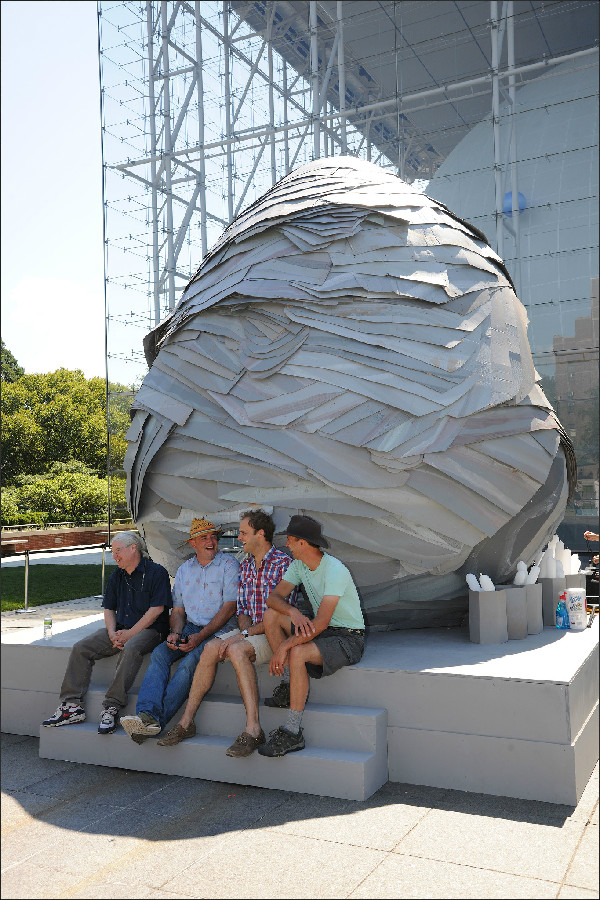Human Wasps Build a Giant Nest in New York

NEW YORK — Some wasps mix wood fibers with their saliva to make paper, from which they construct their delicate nests. Humans can't make paper this way, so when three animal architecture enthusiasts wanted to build their own human-scale wasp nest, they turned to the next best thing: cardboard.
"We can't go around scraping dead wood and park benches, that would have taken several years," said Matty Thompson, one of hosts of the forthcoming TV show "Live Like an Animal."
He and two co-hosts, plus worker wasps they recruited, built the domed structure here over about five days beside the American Museum of Natural History as part of the show in which they replicate animal dwellings and, temporarily, inhabit them. With construction completed, on Friday (July 15) they prepared to begin to live within the structure for three days. [Image of giant nest]
The nest's outer covering of gray-painted, overlapping cardboard layers most closely resembled that of a bald-faced hornet. The insect is a stinging, social wasp that lives throughout North American north of Mexico, said James Carpenter, a curator of invertebrate zoology at the museum and wasp expert who advised during the project.
True to nature, the giant wasps' nest contained many hexagonal cells. In a real nest, these cells would contain eggs and developing wasps. Here, long, white balloons substituted for future wasps.
The hexagonal cells are packed together and suspended in layers.
"That was one of the challenges to overcome," Carpenter said. "The wasps build from the top down. Of course, they can fly."
Sign up for the Live Science daily newsletter now
Get the world’s most fascinating discoveries delivered straight to your inbox.
The human construction process attempted to mimic the natural one to the degree that the outer, cardboard envelope was built top-down, said James Cooper, one of the show's hosts and a future nest inhabitant.
"It was the complete reverse of how you want to build it," he said. There were, of course, human alterations to the structure: The human-scale nest had an interior frame made from metal and wood, materials not in the bald-faced hornet's repertoire. [Nature's Biggest Pests]
The three had previously built and inhabited a beaver's lodge, but this, Thompson said, felt much stranger.
"You can relate to warm blooded-animals," he said. As part of their research, they put a camera into an active wasps' nest. "It did look like an alien spacecraft," he said.
The museum has the world's largest collection of nests built by social wasps, containing about 1,200 specimens, Carpenter said. Most social wasps construct homes from wasp-made paper, while solitary wasps favor burrows.
The audience on Friday contained a few real wasps as well: Several large cicada killer wasps buzzed around. These solitary wasps are longtime residents around the museum — its collection contains cicada killers collected near the museum in the 1890s. These wasps paralyze cicadas that they later feed to their young, Carpenter said.
"Live Like an Animal" will air early 2012 on the Nat Geo Wild cable TV channel.
You can follow LiveScience writer Wynne Parry on Twitter @Wynne_Parry. Follow LiveScience for the latest in science news and discoveries on Twitter @livescience and on Facebook.











